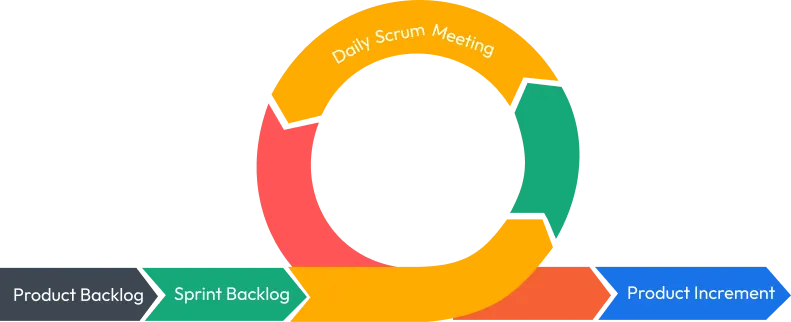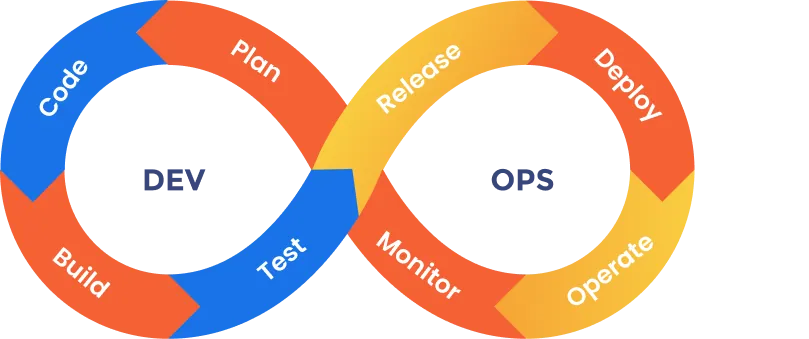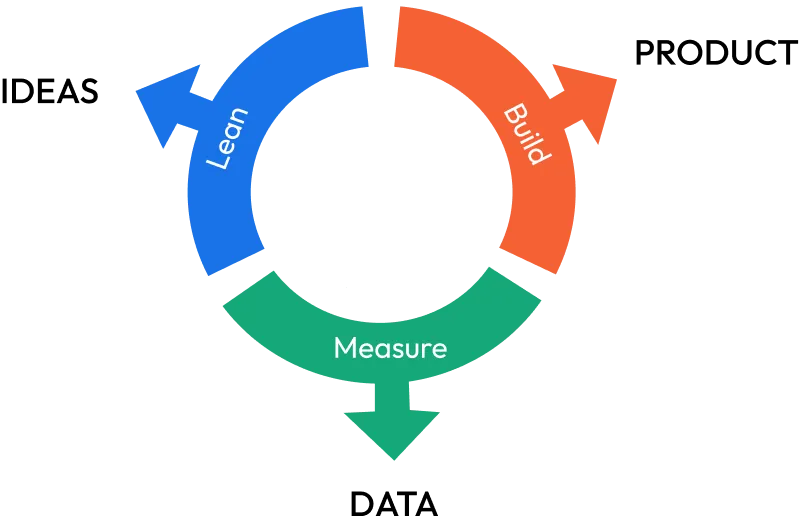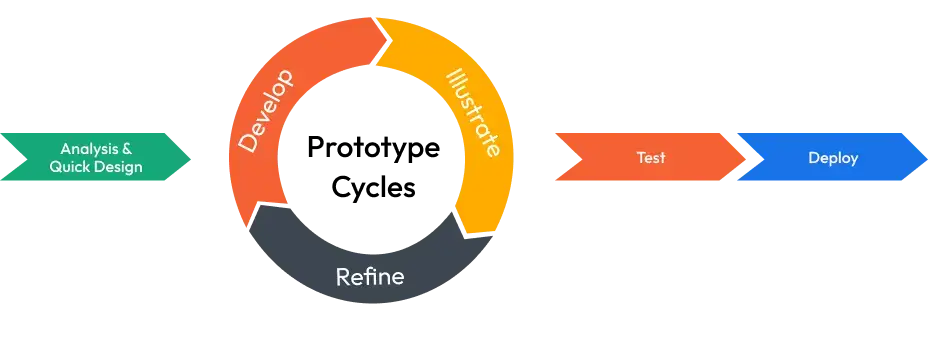Design Thinking
Design thinking is a human-centric approach to innovation and problem-solving.
It encourages empathy, ideation, and experimentation to create user-centered solutions.
Everything we do follows this guiding principle.
See, how we help our healthcare clients.
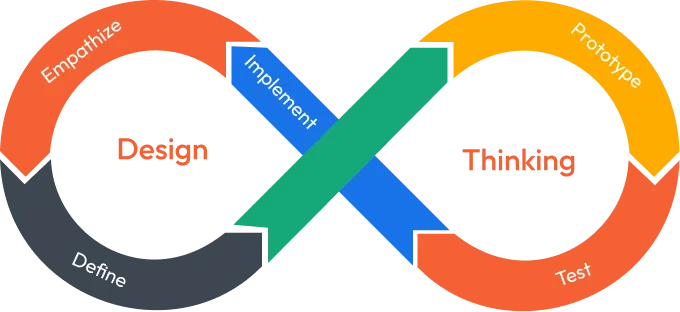
The Process
1. Empathize
Conduct user research to gather insightful information about end-users’ needs and problems.
2. Define
Clearly define the problem based on insights gathered during the first phase.
3. Ideate
Fuel the brainstorming session with creativity, encouraging everyone to explore various possibilities.
4. Prototype
Develop a tangible or visual representation of the solution to test its functionality and effectiveness.
5. Test
Test the prototype with users to gather feedback and learn about its strengths and weaknesses.
6. Iterate
Based on feedback, iterate and refine the solution to enhance its effectiveness and alignment with user needs.
Design Thinking Best Practices We Implement
User-centric focus
Conduct user research to gather insightful information about end-users’ needs and problems.
Iterative development
Develop a tangible or visual representation of the solution to test its functionality and effectiveness.
Collaborative work environment
Fuel the brainstorming session with creativity, encouraging everyone to explore various possibilities.
Rapid prototyping
Clearly define the problem based on insights gathered during the first phase.
Agile
Agile is a set of principles for smooth and effective software development.
It prioritizes customer satisfaction through continuous improvement and iterative progress.
Agile is our go-to in projects where requirements are likely to change over time.
Our Process
1. Requirement gathering
Collect and analyze project requirements, prioritizing them based on stakeholder value.
2. Iteration planning
Plan short development cycles with clear objectives for each phase.
3. Development
Develop features iteratively, encouraging regular collaboration and feedback.
4. Testing and integration
Keep things stable by always testing and integrating to ensure compatibility.
5. Review and adaptation
Keep track of how things are going, and adjust plans based on feedback.
6. Deployment and feedback
Release in stages, get feedback, and make constant improvements.
Agile Best Practices We Implement
Continuous integration
Employ CI/CD pipelines for rapid and reliable releases.
Feedback loops
Establish regular feedback loops with stakeholders and users.
Automated testing
Use automated testing when you can for quicker and more reliable tests.
Test-driven development
Make your code robust and error-free by adopting test-driven development.
Code modularity
Ensure the codebase remains modular and maintainable.
Code refactoring
Keep your code clean and easy to understand through regular refactoring.
Scrum
Scrum is a flexible and iterative Agile framework that’s ideal for managing complex software and product development using incremental progress through sprints.
It is best suited to projects where requirements might change rapidly and there is a need for frequent adaptations. All of our teams are led by a certified Scrum Master and Product Owner.
Our Process
1. Project backlog creation
Identify and document the project requirements.
2. Sprint planning
Choose what’s most important for the next sprint by prioritizing backlog items.
3. Sprint
Use timeboxing to complete tasks within a specific period, usually 2-4 weeks.
4. Daily scrum
Have a quick team meeting every day to make sure we’re all on the same page.
5. Sprint review
Evaluate the output and present it to stakeholders.
6. Sprint retrospective
Think about how things went, and adjust for better sprints in the future.
Scrum Best Practices We Implement
Continuous Integration
Automatically test and merge code changes to ensure quality and consistency.
Automated testing
When possible, go for automated testing to make tests faster and more reliable.
Modular design
Build the software in manageable, incremental units.
Regular reviews
Conduct code and design reviews to encourage collaboration and knowledge sharing among team members.
Definition of Done
Make sure everyone knows what ‘done’ means by clearly defining it for each user story.
DevOps
DevOps is an “infinite loop” methodology, connecting software development (Dev) and IT operations (Ops) to boost teamwork and productivity.
It’s used in projects where rapid, continuous delivery is a priority.
Our Process
1. Planning and collaboration
Collaboratively plan and define project requirements.
2. Code development
Develop code emphasizing version control and collaboration.
3. Continuous integration
Integrate code changes regularly and automatically test them.
4. Deployment
Employ automated tools for seamless deployments.
5. Monitoring and feedback
Monitor system performance and gather feedback for improvements.
6. Automation and optimization
Continuously automate repetitive tasks and optimize processes.
DevOps Best Practices We Implement
Infrastructure as code (IaC)
Manage infrastructure with code to automate processes and maintain consistency in deployment and management.
Monitoring and logging
Use monitoring and logging to see how your system is performing and catch any issues.
Continuous integration/ (CI/CD)
Automate the deployment pipeline to facilitate rapid releases.
Lean
Lean software development focuses on delivering value to the customer by optimizing resources and eliminating waste.
This method works well for projects with clear value streams and a strong emphasis on efficiency.
Our Process
1. Identify business value
Determine the business value from the customer’s perspective.
2. Map value stream
List out the steps and find any unnecessary activities in the process.
3. Create flow
Establish a steady and efficient workflow.
4. Establish pull
Let customer demand dictate the workflow.
5. Deliver fast
Maintain efficiency and continuously improve processes.
Lean Best Practices We Implement
Eliminate waste
Focus on eliminating unnecessary steps and activities.
Optimize the whole
Focus on optimizing the entire process, not just individual components. Build high-quality, long-term solutions.
Built-in QA
Integrate quality assurance throughout the development process.
Empower the team
Build trust and let team members rely on each other’s skills instead of micromanaging.
Rapid Application Development (RAD)
Rapid Application Development (RAD) speeds up software creation using quick prototypes and user feedback, perfect for projects with rapidly changing requirements.
Our Process
1. Requirement identification
Identify basic project requirements.
2. Prototype development
Develop initial prototypes to visualize functionalities.
3. User evaluation
Obtain user feedback on prototypes.
4. Refinement
Refine the application based on feedback.
5. Iterative development
Repeat the cycle until the product meets the desired standards.
6. Final implementation
Implement the final version of the application and launch it.
Rapid Application Development (RAD) Best Practices We Implement
Modular design
Adopt a modular design approach for easy changes and adaptations.
Flexible planning
Makes it easier to pivot, and adapt to changing requirements.
User-centric development
Adjust development based on user research and insights.
Automated testing and integration
Implement automated testing and continuous integration for quality assurance.
Prototype Methodology
In the prototype methodology, a preliminary version of the software is developed to gather user feedback and clarify requirements, which then guides the development of the final product.
Our Process
1. Requirement identification
Identify initial project requirements.
2. Initial prototype development
Create a preliminary version of the software, focusing on visual features.
3. User evaluation
Collect user feedback on the prototype.
4. Refinement
Refine the system based on user feedback.
5. Iteration
Repeat the process until the system meets the user’s expectations.
6. Final development
Develop and refine the final software version based on the information gathered from the initial prototype.
Prototype Methodology Best Practices We Implement
User involvement
Actively engage users to gather relevant feedback.
Iterative development
Improve the prototype bit by bit with iterative development to keep making it better.
Flexible design
Maintain a flexible design and modular approach to easily accommodate changes.
Feedback integration
Make the product meet user expectations by incorporating feedback effectively.
Partner with us for a journey into innovation. We prioritize staying current with the latest methodologies to ensure your projects are backed by the most advanced and effective strategies. Let's achieve excellence together!
Client Testimonials
Discover the success stories shared by our satisfied clients. Learn how our expertise and dedication have helped them turn their visions into reality and achieve outstanding results.
Contact Now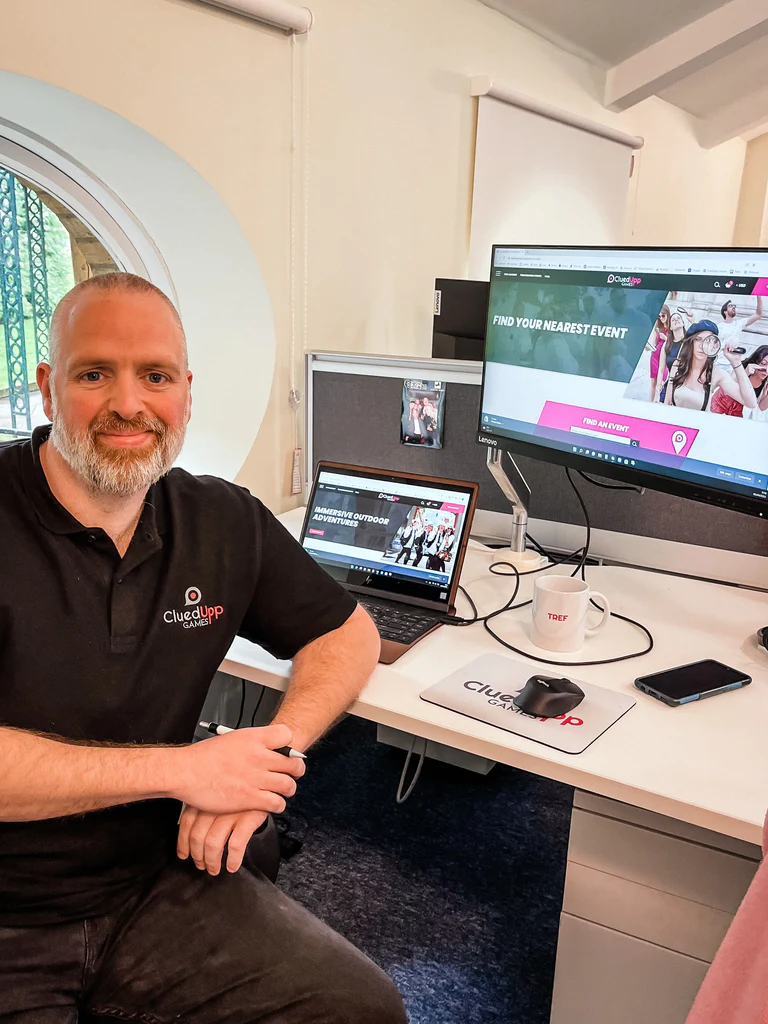
They offer a cost-effective service and I was happy with the experience.
They accurately translated existing app features to iOS and even made slight improvements. Users love the iOS version and post positive reviews of it on the App Store. Intelivita provided excellent service at a great price.
Tref Griffiths
Owner, CluedUpp Games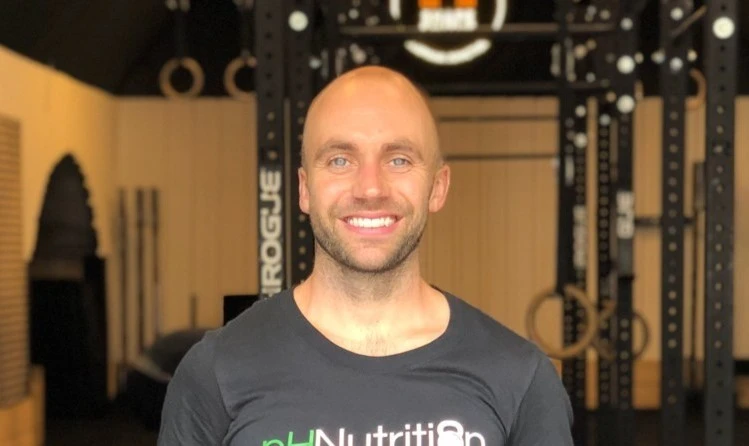
They really listened to the brief and delivered above and beyond.
Intelivita created a beautiful, user-friendly app, showcasing their professionalism and quick understanding of our needs. Their friendly, prompt communication made them an integral part of our team.
Liam Holmes
Owner, pH Nutrition
They put in a lot of effort to stay in touch and keep me updated.
The working iOS app launched in the App Store and has received positive feedback from key stakeholders. Intelivita keeps the project moving (and on budget) through constant communication, and timely updates.
Scott Etherington
Chief Technical Advisor, Eat2EarnContact Us for Project Discussion
Ready to take the first step towards turning your software dreams into reality? Contact us today to schedule a project discussion. Our team of experts is eager to hear your ideas and provide tailored solutions to meet your unique needs.
12
+Years of Experience
91
%Client Satisfaction Rate
180
+In-House Talent
750
+Projects Delivered

